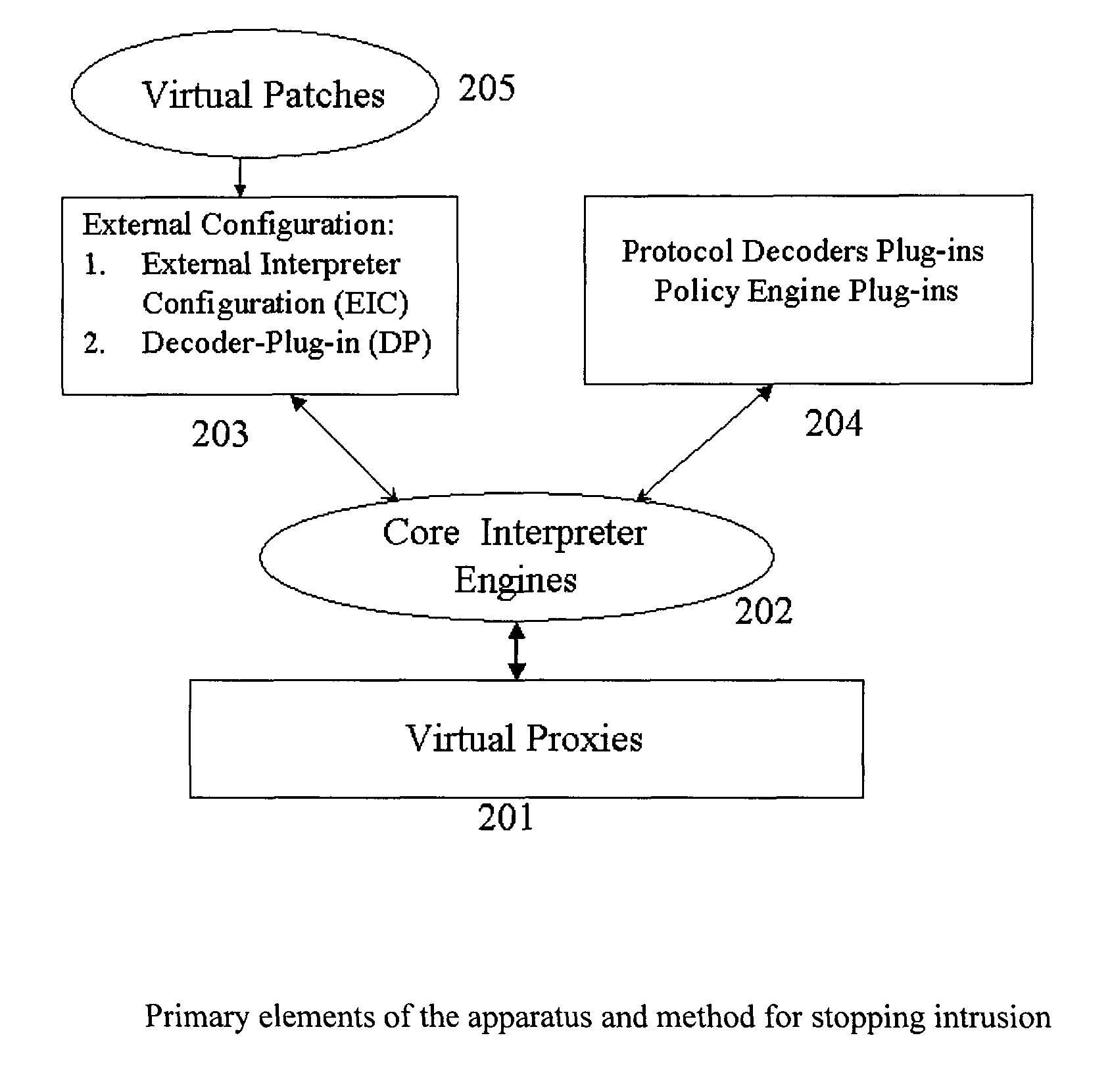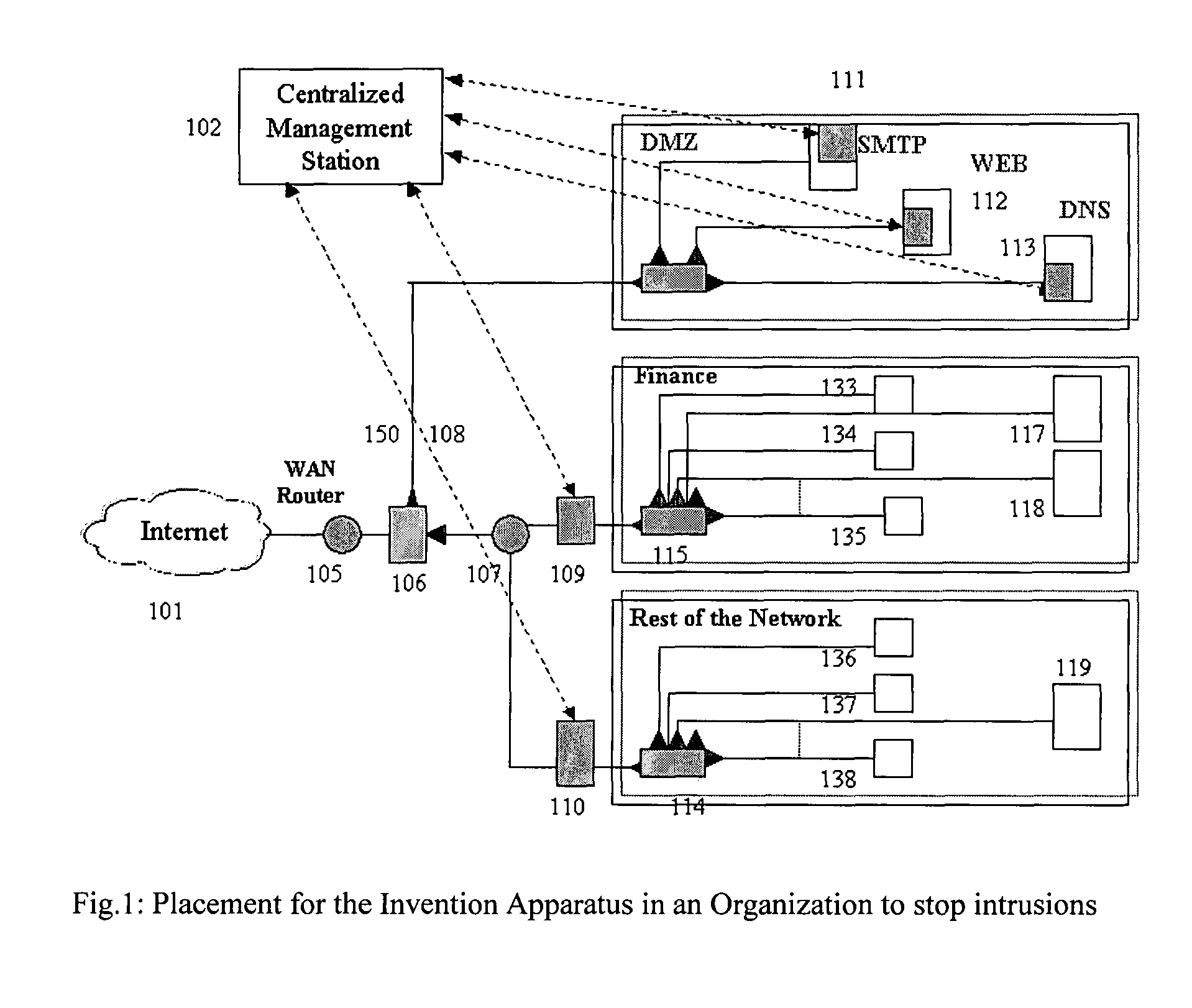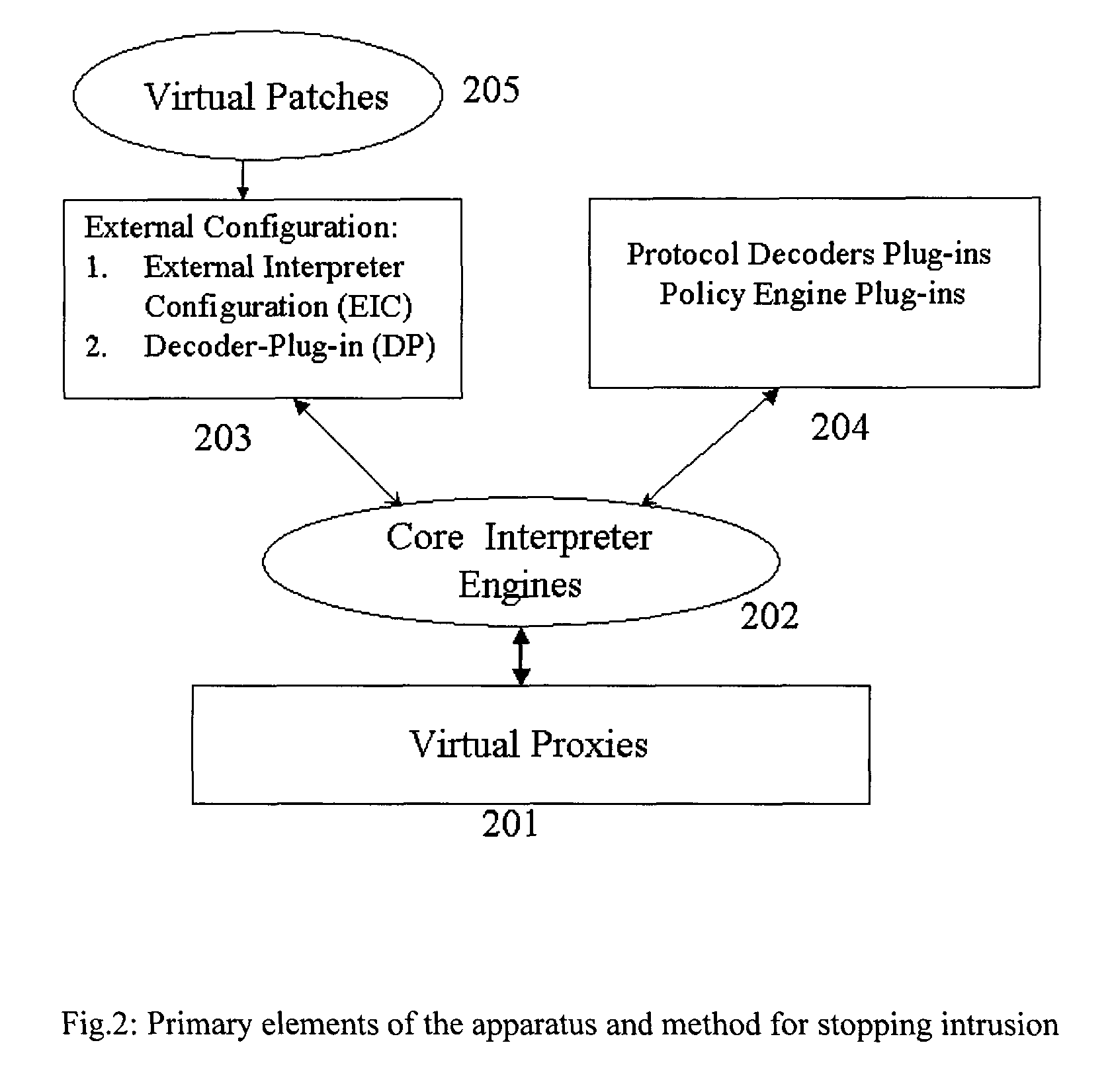Method and apparatus for the detection and prevention of intrusions, computer worms, and denial of service attacks
- Summary
- Abstract
- Description
- Claims
- Application Information
AI Technical Summary
Benefits of technology
Problems solved by technology
Method used
Image
Examples
Embodiment Construction
[0042]Detailed descriptions of the preferred embodiment are provided herein. It is to be understood, however, that the present invention may be embodied in various forms. Therefore, specific details disclosed herein are not to be interpreted as limiting, but rather as a basis for the claims and as a representative basis for teaching one skilled in the art to employ the present invention in virtually any appropriately detailed system, structure or manner.
[0043]1. Dynamic Injection of Vulnerability Information to Stop Intrusions / DOS / Computer Worms Attacks
[0044]MITRE organization manages Common Vulnerability and Exposures (CVE) project that is funded by FedCIRC and US General Services Administration. CVE is a list of standardized names for vulnerabilities and other information security exposures. CVE names all publicly known facts about computer systems that could allow somebody to violate a reasonable security policy for that system. CVE editorial board differentiates between vulnerab...
PUM
 Login to View More
Login to View More Abstract
Description
Claims
Application Information
 Login to View More
Login to View More - R&D
- Intellectual Property
- Life Sciences
- Materials
- Tech Scout
- Unparalleled Data Quality
- Higher Quality Content
- 60% Fewer Hallucinations
Browse by: Latest US Patents, China's latest patents, Technical Efficacy Thesaurus, Application Domain, Technology Topic, Popular Technical Reports.
© 2025 PatSnap. All rights reserved.Legal|Privacy policy|Modern Slavery Act Transparency Statement|Sitemap|About US| Contact US: help@patsnap.com



